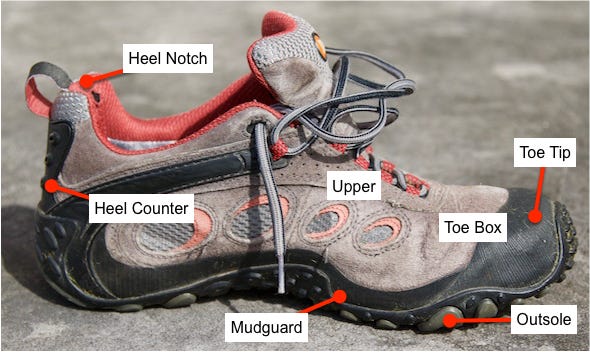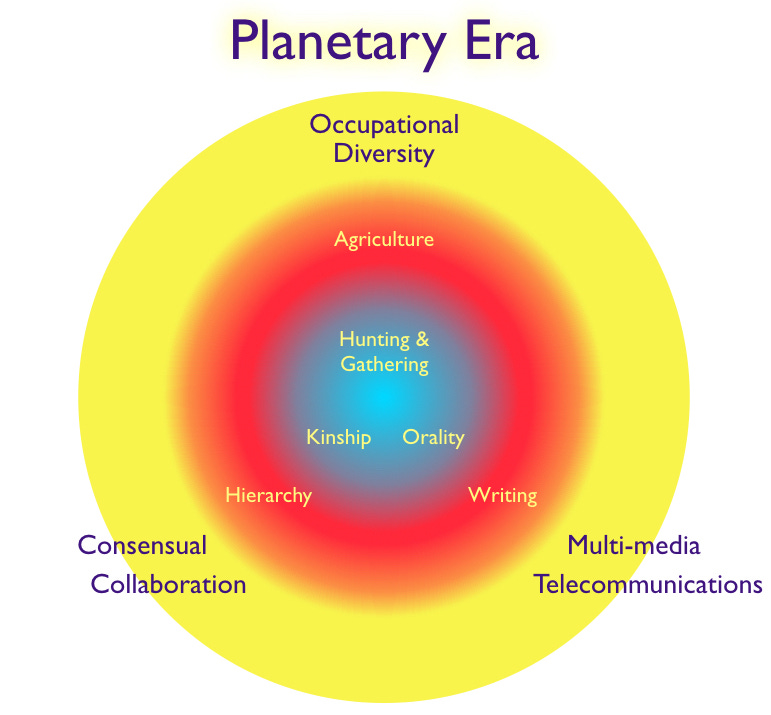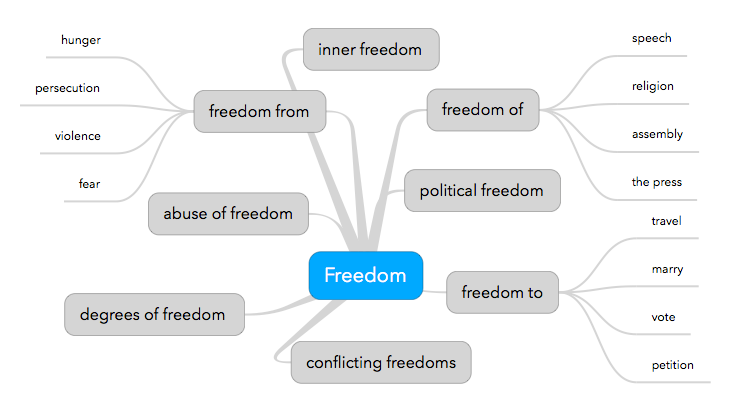[This is part of BFNow Self-Study Module 2: Objects, Categories, Territories & Maps. For more about the overall Self-Study program, please look at About BFNow Self-Study and BFNow Self-Study Orientation.]
If you haven’t done so already, let me encourage you to pause, relax and release your cheeks and your jaw and take three deep breaths.
I’d like to start today by walking through an example of approaching the same thing in three ways: as an object, as an instance of a category and as a territory. Here’s the thing:
Before you’re even conscious of what’s happening, your what pathway has swung into action and analyzed this image as an object. Hundreds of millions of years of survival training makes sure that the Amygdala and the what pathway work together to answer the constant first question: “Is it a threat?” As long as it isn’t a threat, the rest of the process fills in and your conscious awareness is served up a mind-bundle for this thing as an object.
Thanks to the associations in that mind-bundle, you’ll know in which categories this thing can be an instance. You wouldn’t be surprised to see it grouped with other similar things:
You are likely to recognize this thing as an instance of the category shoe. If you engage in categorical thinking about this thing, much of the individual detail will be lost as, in your mind, you use a generic shoe to represent the category.
All these associations happen quickly and automatically. It’s all in the domain of thinking-fast, where the subconscious does most of the work and we are consciously aware of only the results, not the process that produced those results
Approaching things as territories, however, takes a conscious choice (although with practice you can develop a fairly automatic discernment you might call, “this should be approached as a territory.”)
What happens if you choose to approach this thing as a territory? You enter the domain of thinking-slow, where you are aware of, and guide, the process as well as the results. You first become open to seeing the thing’s details and its parts. Your attitude is one of inquiry and the expectation that there is always more to learn. You accept the unknowable depth of mystery that is there with every thing but that doesn’t stop you from learning what you can.
After some study of the thing you might build a map, e.g. like this:
You recognize that this map is just one of many that could be connected to this thing when viewed as a territory. You expect your map to be a partial, selective and provisional representation of the thing. This map is spatial and tied directly to the thing, but it could also have been more abstract, like a diagram or even a written report.
You can prove a map inaccurate but you can’t prove it right. You can test your map – in this case you could consult an expert on shoe terminology – but even being accurate doesn’t make this the best map or the right map. Another accurate map might show the names of each material used in the shoe or the relative environmental impact for each material. Each map serves a different purpose; no one map or even group of maps tells the whole story of this thing as a territory.
I’ve used a physical thing for this example but ideas can also be approached as territories, as we’ll soon see.
When is it worth the extra time and effort to approach something as a territory?
I’d suggest a list that’s similar to “when to use a systems perspective” in System Literacy Part 4, starting at 0:52 .
When the thing has parts that are important.
When relationships and/or context are important
When you’re creating or designing something new.
When it isn’t clear how to categorize the thing.
When a shared understanding about something is important and not obvious.
When there is a conflict, inside yourself or with others, about how to define or categorize something.
For the delight of discovery.
This isn’t a meant to be a complete list. Just something to get us started.
With that list in mind, let’s look at some more examples.
You
In the terms we’ve been using, we often approach ourselves as objects or instances of categories. In either case, we treat ourselves as a unit with various qualities attached. Thus it is common to think that you have a body and a personality. The Inner Smile started the process of looking at yourself as a territory and the sub-personalities continued that. Not only did you tune in to your inner multiplicity, but it was also clear that, for example, your list of sub-personalities was just one of many maps you could use for your personality territory. I find that life is simply more interesting and more fun when I think of myself and others as territories, full of rich complexity and mystery.
Tribal – Empire – Planetary
As with all language-based, what-pathway-based concepts, we expect these eras to be distinct categories with clear definitions and crisp distinctions. That expectation will cause no end of difficulties. In this case it is also all too easy (I know I do it) to turn the Empire – Planetary pair into a moral hierarchy with Empire being the “bad guy” and Planetary being the “good guy.” They become code words for what we like or don’t like. Ironically, doing so is likely more deeply “Empire” than many of the things we accuse of being “Empire.”
The antidote is to approach this group of ideas as a territory and get good visual support in doing so. This set helps:
Each era builds on and incorporates aspects of its predecessor. There is continuity as well as change. The relationships between the eras are too complex and multifaceted to be dealt with well by categorical thinking.
Also, each of these eras is delineated simply, only by time period and a few cultural characteristics. Yet the territory within each of those delineations in enormously complex. We can expect many maps and many characteristics that would seem contradictory if we were attempting to make each era into a well defined category.
Here’s a challenge for us as a group: Can we find a way to get good use out of the important distinctions between the eras without falling into categorical traps?
Freedom
Any idea this big, this abstract and yet this important needs to be approached as a territory. We could equally well choose peace or truth or love. If we approach these words with a what-pathway mentality, as language does by default, we will struggle to come up with THE definition and find ourselves in endless battles over what is the right definition. If we approach them as territories – with the humility and curiosity that goes with that approach – we can come up with multiple maps that are attuned to context and honor all of the factors that are relevant to each idea. People will still, no doubt, argue about the maps – what’s accurate or not – but at least among those who understand the spirit of territories & maps, we can let go of the pursuit of the one. right. universal. absolute. true. definition of the idea.
Here’s the start of a mind-map for various aspects of the territory called freedom:
More generally, it is when we consistently approach big ideas like morality, justice, God and love as territories that the importance of this approach takes on a whole new dimension. Inner peace, peace among people and peace with nature become so much easier with frequent use of the territories & maps approach, with its tolerance, humility and openness to learning.
Experiential
Identify situations or issues in your life that are currently “categorically challenging” and would be better approached as territories. You can start fresh or use your list, from two days ago, of places where categorical thinking doesn’t work well for you.
Choose one of these and start to map out its many aspects in your journal. Your “map” can be as simple as a list but even better if it’s a diagram (or mind-map) that shows the relationships among the aspects.
Keep adding to your map throughout the day. If you get inspired to look at the issue from another perspective with the help of a second map, go for it.
Continue to find opportunities throughout your day to consciously choose to approach various things as territories. Practice using the language of ‘territories’ and ‘maps’ at least to yourself.
Review your map(s) in the evening. Is your mapping changing your relationship to the original issue? If so, how?
Continue to find opportunities throughout your day to consciously choose to approach certain things as territories. Use the language of ‘territories’ and ‘maps’. If you are in conversation with someone who is taking or has taken the course, practice using the language of ‘territories’ and ‘maps’ with each other.
If you have questions or comments, please post them here.
Thanks,
Robert
[Link back to the Module 2: Objects, Categories, Territories & Maps Overview page.]







